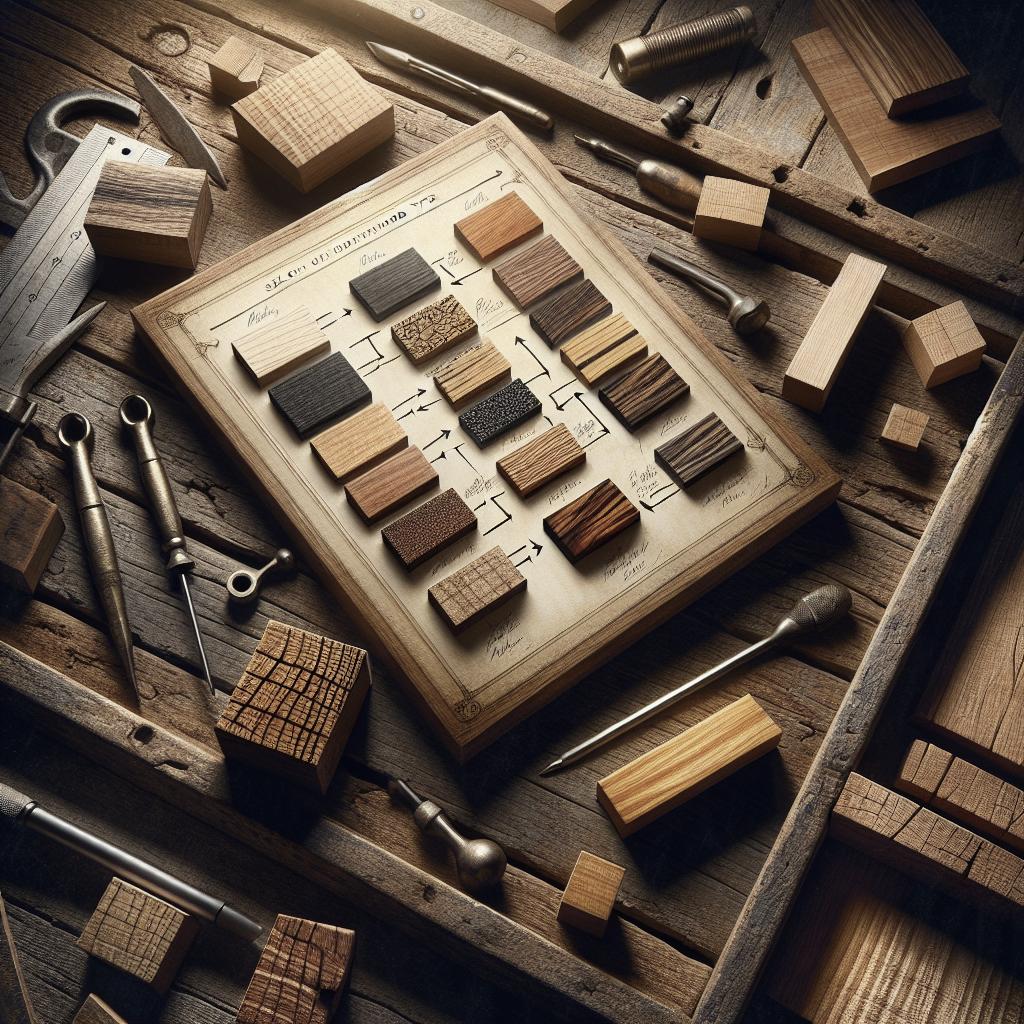“`html
How to Work with Exotic Woods for Special Projects
Exotic woods offer a unique aesthetic and robust durability, making them ideal materials for special projects that demand a touch of sophistication. This blog post explores the allure of DIY projects utilizing exotic woods, contrasts them with domestic options, and provides insights into handling these unique materials. We delve into the complexities that arise when working with exotic hardwoods, and provide practical advice on getting the best out of these beautiful materials. Engage with us by leaving comments at the end, as we explore the intricate beauty and challenges of exotic woodwork.
Why DIY with Exotic Woods
Exotic woods, renowned for their unique grain patterns and vibrant colors, are highly sought after by woodworkers. These woods are often used in projects that aim to stand out due to their unparalleled beauty and distinctive characteristics. Engaging in DIY projects with exotic woods allows craftspeople to create unique pieces that are not only functional but also works of art.
DIY enthusiasts appreciate the challenge that comes with working with exotic woods. Unlike more common materials, exotic woods require special tools and skills. However, the satisfaction derived from successfully completing a project using such coveted materials is immeasurable, making the woodworking journey all the more rewarding.
Softwoods vs. Domestic Hardwoods vs. Exotic Hardwoods
When choosing wood for a project, understanding the differences between softwoods, domestic hardwoods, and exotic hardwoods is crucial. Softwoods, typically sourced from coniferous trees, are generally more affordable and easier to work with, making them suitable for less demanding projects. However, their relative softness may not provide the durability required for certain applications.
Domestic hardwoods, procured from deciduous trees, offer improved strength and aesthetic value. They are popular in furniture making and flooring. Exotic hardwoods, on the other hand, often hail from tropical regions and boast an array of natural oils and colors. These properties make exotic hardwoods highly durable and resistant to pests, albeit at a higher cost and complexity of handling.
Working With Exotic Hardwoods
When working with exotic hardwoods, caution and preparation are key. These woods often contain high levels of natural oils and silica, which can dull tools quickly. As such, it is paramount to have sharp, high-quality tools to ensure precision and reduce wear and tear. Additionally, wearing protective gear is advised due to the potential for allergic reactions to wood dust.
Moisture control is another critical factor to consider when using exotic woods. These hardwoods can warp or crack if not properly acclimated to the environment in which they will be used. Ensuring that the wood has reached an equilibrium moisture content before beginning a project can prevent such issues and lead to a more successful outcome.
The Complexity of Exotic Hardwoods
Exotic hardwoods, while visually stunning, often pose unique challenges. Their intricate grain patterns and high density necessitate greater attention during cutting and sanding to avoid splintering or chipping. The density of some exotic species also adds significant weight, impacting transport and installation.
Another challenge is the ethical and sustainable sourcing of exotic woods. These materials are often harvested from sensitive ecosystems, and responsible buyers should prioritize suppliers who adhere to sustainability certifications, such as the Forest Stewardship Council (FSC). This consideration not only aids in conserving biodiversity but also ensures the availability of these precious materials for future generations.
Leave a comment.
We encourage you to share your experiences and thoughts on working with exotic woods for special projects. Did you learn a tip or trick that might help others? Or perhaps you encountered a challenge and found a creative solution. Your insights can enrich our community of woodworking enthusiasts, so feel free to leave a comment below!
Summary of Main Points
| Section | Main Points |
|---|---|
| Why DIY with Exotic Woods | Exotic woods are desired for their unique beauty and offer a rewarding challenge for DIY projects. |
| Softwoods vs. Domestic Hardwoods vs. Exotic Hardwoods | Exotic hardwoods boast durability and aesthetic appeal but are more costly and complex to handle than softwoods and domestic hardwoods. |
| Working With Exotic Hardwoods | Preparation is essential, requiring sharp tools, moisture control, and protective gear to mitigate allergic reactions. |
| The Complexity of Exotic Hardwoods | Handling challenges include intricate grains, high density, and the need for sustainable sourcing practices. |
“`


